Content Writing is one of the most promising and rewarding skills you can work towards, that not only helps you work flexibly but is a hectic-free profession compared to other options.
Being a content writer, you can create an outlet for yourself to earn substantial active income without requiring much unpaid training or hassles along the way.
Anyone can be a content writer who knows how to use the internet properly and has a way of writing English.
In this guide, I will show you how you can become a content writer from scratch in just 7 steps, covering all the grounds from the first step of picking your laptop up to generating a monthly income of at least $5000, while working on your own terms and time.

I will cover each and every ground to getting you to be a content writer from being a layman, explaining how you get started, all the technical skills you need with their explanations, writing your first article, practising grounds and so much more.
In a step-by-step method, this guide will tell you how to do everything, in significant detail, until you can earn as a content writer!

For a better reading experience, check out the table of contents of this article to better understand the outline of being a content writer.
Table of Contents
- What Is A Content Writer?
- Step 1: Starter Kit
- Step 2: Choosing The Type Of Content You’re Comfortable To Type
- Types Of Content Writing Explained With A Practical Example
- 2. Web Content
- Step 3: All The Technical Stuff You Need To Know As A Content Writer
- Step 4: Writing Your First Article
- What Makes A Good Content Writing Article?
- Choosing Your First Topic
- Where And How To Research A Topic
- Finding Keywords For Your Blogs
- Creating A Heading Framework For Your Blog
- How Lengthy Should Your Blog Be?
- What Tone Should You Use?
- Start Writing!
- Introduction – The Most Important Piece Of An Article
- Writing The Body Of An Article
- Concluding Your Blogs Like A Pro
- Proofreading and Checking For Plagiarism – The Cherry On Top Of Your Cake
- Step 5: How To Start Earning As A Content Writer
- Step 6: How To Practice Content Writing And Get Better
- Step 7: Starting Your Own Blog?
- Conclusion
What Is A Content Writer?
Before jumping into the first step of becoming a writer, you first need to understand what you’ll be doing as a content writer, how you’ll find work, how would you earn during the process, and why it may be the best profession to choose.

What Does A Content Writer Really Do?
A content writer produces written content for websites. Basically, whenever you visit a website, any writing that you see is done by a content writer.
Whether it’s the homepage that has 5 lines of content explaining a business or a blog like this one, the writing is done by a content writer.
Now, content writer doesn’t only focus on writing that is free from grammatical errors and sounds good, they need to attract a business’ target audience through their writing.

How does a content writer do that?
By using the right tone to approach clients, an appropriate writing style, adequate research to build trust, and keywords.
That may sound technical for now, but don’t worry. I’ll try my best to explain everything in a very simple and guided manner throughout the article. Because, essentially, content writing is easy and simple to do.
Here’s a general list of what a content writer may write:
- Blogs (like this one)
- Web pages (check out our homepage, the writing there is web content)
- Social media posts (captions on posts)
- Email writing (for email newsletters)
Who Does A Content Writer Work For?
Content writers work for businesses that manage existing website(s) or are looking to launch one.
A content writer would be responsible for all the written material to be published on that website (web content, blogs, etc.).
This business could be a blogging website, an e-commerce store hiring desiring an attractive homepage, or a business that wishes to publish weekly blogs to attract more traffic to their website.
A content writer either applies for a job where they act as the employed writer for a business under a contract, or attracts clients (various businesses) using a portfolio that helps them grab projects as a freelancer.
How Much Does A Content Writer Earn?
There are two payment methods for content writers: a pay rate per word or a salary.
Most content writers that work freelance have a rate per word. For example, if you charge $0.05 per word, a client would pay you $50 for an article of 1000 words.
On the other hand, if you’re employed by a business, you will be earning a salary.
On average, a content writer earns around $60,000/year.
With some experience, reaching six figures is considered inevitable.
Benefits Of Becoming A Content Writer
Since a content writer focuses on fulfilling the writing needs of a business, and not much towards management or actively dealing with people, things come easy to you as a content writer.
Here are some great benefits of being a content writer:
- Flexible hours/pay
- Choosing your own timings
- Limited interaction with bossy managers or customers
- Visualized earnings (you earn every time you type a word)
- Scalable growth (see step 7)
- Gateway to vast knowledge (writing about different businesses helps you understand how different niches in the world exist and work)
- Easy work-from-home opportunities
- High and increasing demand (job security for the long run)
Step 1: Starter Kit
The first step needs to be gathering all the resources a content writer needs.
Fortunately, content writer doesn’t need loads of research or heavy equipment for their work, but here’s everything you need to have.
All The Tools A Content Writer Needs
Starting out as a content writer is extremely easy. You won’t have to really apply for courses or watch hours and hours of youtube videos to understand content writing skills.
Essentially, all you’ll need is to type and type and type.
Here’s everything a Content Writer needs:
| Tools | Bare Minimum | Recommended | Price |
| Laptop | 4 GB RAM, i3 Processor, Intel HD GPU, 720p display | 8 GB RAM, i5 Processor, Intel HD 4000 GPU, 1080p display. | $250-$400 |
| Internet | 2 Mbps | 10 Mbps | 300 Mbps for $30/month |
| A place to work at | A bed, floor, seat, or a coffee place | Workbench | $3 (per coffee cup) – $200 (home office) |
As you can see, starting out as a content writer is extremely affordable.
I’m sure almost all of you would already have a PC, internet, and a place to sit.
Google Drive and Google Docs – For your workplace and storage needs
Most content writers work on Google Docs and save/share their work on Google Drive.
So go ahead, fire your laptop up, and create a Google account on the extremely unlikely chance that you don’t already have one.
Go to Google Drive, create a folder by the name of Content Writing, right-click in it, and click on Google Docs. This should open a new document.
This is how you’ll start and write each article for content writing.
Anything you write in the document will be automatically saved in Google Drive.
Once done, you can right-click the document and press Share to share it with your client.
Install Grammarly, don’t be too confident of yourself…
No matter how great you are at writing with no grammatical or punctuation errors, every content writer needs proofreading.
This is where Grammarly comes in.

Download and Install Grammarly’s extension for your browser and sign up.
Now each time you’ll write in Google Docs, Grammarly will highlight any mistakes you make.

Note: Since Grammarly works on AI, there can be some cases where Grammarly highlights a mistake but it is in fact grammatically correct. This only happens once in a blue moon though.
Exploring Youtube- no, not cat videos
Content writing doesn’t NEED you to complete an online or physical course, however, you will still need some guidance.
Personally, I think Youtube is your best friend here.
Watch some Youtube videos on content writing for beginners.
The channel I’d recommend is Ahrefs.
They’re essentially a business that offers digital marketing products, but they have very knowledgeable, insightful, and easy-to-understand videos on content writing.
Step 2: Choosing The Type Of Content You’re Comfortable To Type
Note: You may get overwhelmed with all the stuff a content writer needs to do. Don’t worry, most content writers only deal with SEO blogs. For a quick getaway, only read SEO Blogs and Types Of Blogs.
Now that you’re equipped with everything a Content Writer needs, you need to get familiar with all types of content writing.
I will not only explain how to write these types of content but also why a business may need this and what it expects from you.
Types Of Content Writing Explained With A Practical Example
Businesses need different types of writing. Here, we’ll explain the most common demands of a business from a content writer.
1. SEO Blogs
SEO blogs are the most common type of work content writers do. This involves the writer typing up an article on a topic and explaining what the topic demands.
What you’re reading right now is a blog, specifically a how-to guide, but so is this, this, or this a blog.
The main reason for doing these blogs is to improve the website’s SEO.
If you’re a complete beginner, you may not know what SEO is, but don’t worry, there’s a detailed explanation in Step 4.
For now, all you need to know is that with better SEO, websites appear on Google more, increasing the chance of visitors clicking on them and benefitting the business.
Example: Improving SEO As A Content Writer
For example, if I have a coffee place set up (named Delicoffee), I will hire a content writer to write blogs about coffee for my website. This will improve my website’s SEO.
I’ll have the content writer write blogs relating to topics such as:
- Why Delicoffee is the best new coffeehouse
- Delicoffee– the perfect spot to date at
- How are coffees brewed?
Now that my website has these articles, the next time someone googles ‘new coffeehouses near me’ or ‘romantic coffee places for a date’ or even ‘how are coffees brewed’, my website may be shown in the first few results that Google shows to the user.
This will make it extremely likely for the person who Googled the phrase to click on my website, which will help my business get more customers.
2. Web Content
Web Content is all the writing that you see on the forehand of a website. This typically includes webpages such as:
- Homepage
- Services Page
- About Us
- Contact Us
You can visit any website, and you’re very likely to see these pages.
A content writer is the one who writes on these pages, in a very welcoming tone that the visitor wants to stay on the page and explore more.
Since these are the forehand pages of a website, the writer also needs to explain what the business is accurately and in a summarized way, such that the visitor is not confused.
A writer may also use Call To Actions (explained more in Step 3) to intrigue the customer to engage with the website (e.g. buy a product on the website).
Keywords are used in Web Content as well, which can help websites have better SEO.
Example: Delicoffee Hires A Content Writer To Make Their Website Attractive
For example, if Delicoffee’s homepage has the words ‘Best Coffeehouse Of New York’, it would help Google rank the website higher in its results when someone googles ‘best coffee places in New York’.
The content writer will also wordplay with adjectives to put a great image in the viewer’s mind that assures them the coffee will be amazing.
And they may use an extremely friendly tone on the Services page, to explain what Delicoffee offers, such that it seems personal and the reader feels welcome in the place.
3. Email Marketing
Email marketing does not help a company’s website with SEO, which is why a writer does not need to focus on keywords here.
In email marketing, a content writer writes a very appealing email on behalf of businesses.
This will include writing an exciting Subject Line that increases the chance for a recipient to open the email, an explanatory body of the email that helps the reader understand the purpose of the email, and Call To Actions (explained more in Step 3) to push the customer to engage and do as they’re told in the email.
Example: Delifcoffee starts an Email newsletter
Ever since the start of the business, Delicoffee has signed up their customers for email newsletters.
They have just started offering cakes on their menu and would like to market this news through email marketing, announcing the news by sending emails to their customers.
A content writer would now write the email, with an appealing subject line ‘Try A Cake With Your Next Coffee For FREE’, the main body of the email describing the cakes in a lucrative manner that makes the reader want them more, and a Call To Action at the end such as ‘For the first 500 customers only, so hurry up!’ to create emergence and make it more likely for the reader to visit.
4. Script Writing
While content writers and scriptwriters can be considered as different professions, many content writers in workplaces are used to writing scripts.
Script writing may include writing a script that is transferred to a business’s salesman to use on new leads or a script that is read by an actor in an ad.
In both cases, the writer needs to display the business in a very positive way, ensuring the business’s product or service is sold to the customer watching the ad or at the receiving end of the call.
Example: Delicoffee runs their first Youtube ad
Delicoffee wants to approach more customers. This leads them to try running a Youtube ad.
This ad will be animated by a graphic designer and animator, and posted by a digital marketer, while the script of the ad is written by a Content Writer.
The content writer writes the script of the ad, understanding what the business is trying to sell, and using an extremely persuasive and informative approach to sell the idea to a viewer.
Note: There are other types of content writing as well. If you want to take a deeper look, check out our in-depth guide on 7 types of content writing.
Types Of Blogs You’ll Have To Write With Examples
While a content writer has a lot to offer, the most you’ll be dealing with (at least as a freelancer) would be blog posts.
This is why I think it’s important to categorize blog posts for you as well.
There are essentially 3 types of blog posts you’ll see:
- How-To Guides
- Informative Guides
- List Guides
1. How To Guides
How-To guides are basically articles that answer a question.
As a content writer, you’ll be met with topics that impose questions e.g. How to Mark A Spoiler On Discord Mobile or How To Add Admins On Facebook.
In these articles, you will have to answer the question on the topic for readers, in a very simple and efficient manner such that the reader understands.
This will, almost always, involve a step-by-step method where you explain to the reader how to solve the problem using steps.
What you are reading right now is also a How-To Guide.
2. Informative Guides
The purpose of an informative guide is to explain a subject to the reader. This subject may be a product, service, or anything that exists in the world.
For example, you may have heard of the term Web 3. A content writer could be asked to write an informative guide on the topic: What Is Web 3 – A beginner guide.
As a content writer, you will first research the topic itself, understand the concept yourself, and then explain it in your own words in an understandable and extensive manner.
3. List Guides
In a list guide, you will need to present options of products, services, or ideas to a reader, explain and compare each one of them, and bring knowledge to the reader.
An example of this would be Top 19 websites for remote jobs.
Unlike in a how-to or an informative guide, the content writer here would research websites that offer the said service in the topic, make up a list of 19 websites, explain each one of them to the reader and bring options to them.
Step 3: All The Technical Stuff You Need To Know As A Content Writer
Now that you understand how content writer earns and what they write, you need to get into the technical aspect of being a content writer.
Don’t worry, I’ll explain each of them in a very simplified manner so you can understand the concept without having any prior knowledge about it.
All of the above-mentioned skills are more-or-less easy for anyone to do who has a good typing speed and a strong grasp of English to write a document.
The technical aspect of content writing is what makes your article shine. These adjustments are really how the business you write for is helped, whether it be better Google rankings or more readers to a blog.
The better you are at the technical stuff, the better a content writer you would be.
So let’s get right into it!
Understanding Content Writing SEO
The first thing you need to understand as a Content Writer is SEO and how a content writer helps websites improve their SEO.
SEO stands for Search Engine Optimization. This technically means optimizing your website to appear better on search engines.
Out of the 7.9 billion people that inhabit the Earth, 4.3 BILLION people use Google.
And Google, in itself, is a search engine.
This means people from all around the world use Google to find answers on the internet.
If they’re looking for an answer to ‘best barber shop near me’ or ‘how to start content writing’, they’ll most probably Google it.
And websites or businesses that offer the answer to it, a barber’s website for the first example and a digital marketing website for the second one, would want users Googling that phrase to end up on their website.
This would increase traffic on their website and make it more likely for the user to benefit them (either by purchasing from their website, booking an appointment, or merely watching ads on the website that will generate revenue for the website’s creator).
So what does this tell the business website? How do you get your business more profitable on the internet?
To attract more customers to your business, they need to optimize their websites to appear more often on Google searches (SEO), so that users click on their websites and benefit them!
AND THAT IS WHERE A CONTENT WRITER HELPS.
How?
That is kinda complicated- but I’ll give it a shot at easing things up for you.
To appear on the first page of Google SERPs (Search Engine Result Pages), your website needs to have the answers to the questions people ask Google.
And not just any answer, but good answers.
Your website needs to have keywords that are the same as what people use when Googling stuff.
And your website needs to have good backlinks to build credibility.
All of this, except for the backlinking part, is done by a content writer.
Example Of Using A How-To Guide To Improve SEO
Using a very simple example, if I have a hardware store website, I will hire a content writer to write How-To Guides on popular hardware-related queries that users search.
For instance, I will ask the content writer to write up a guide on ‘How To Replace A Ceiling Fan’.
If the content writer is good, the content will be good, and Google would rank my blog on the first page.
Now, whenever someone Googles ‘How To Replace A Ceiling Fan’, my website would come up with the right answer.
The user clicks on my website, gets the answer from the blog, and since they’re already on my website, may purchase from me, ultimately benefitting my business with higher sales!
Understanding Search Intent
Search intent refers to the purpose a user searches a question for.
Basically, to identify exactly what the user is looking for.
The way Google identifies articles compares them, and filters out the best of the best on the first page of Google is still a mystery to people.
But one thing is clear, articles that answer the search intent of a user clearly, often end up at the top.
This is why, as a Content Writer, you need to primarily understand what the user may be looking for when he Googles something related to your article.
Example Of Including Search Intent In Your Blogs
For example, if you’re writing an article on ‘How To Enter The Metaverse’ you first need to enter the user’s mind.
Take a look from the other perspective. For someone googling that, what information would they seek?
Would they be interested in the latest tweets of Elon Musk relating to the Metaverse or more on what applications can be used to enter the Metaverse?
Once you have a general grasp of what the search intent may be for your article, you need to research and write the appropriate answers for each one of them.
If you think many users googling that phrase may need a cost breakdown of how much it would cost to equip yourself with the right tools to enter the Metaverse, go ahead and insert a heading of ‘Costs To Enter The Metaverse’ and break it all down to satisfy the search intent!
Understanding Keywords
Keywords are the phrases that help Google recognize what your article is about.
Google doesn’t understand your blog by just its title. Basically, Google has bots that go through your article and pick out the phrases and keywords that you used in the blog to understand what it’s about.
If your blog, for example, contains the keywords of:
- cheapest guitar of 2022
- clean guitar tone
- how to save up for a good guitar
- reliable intonation
Google would understand your blog is a guitar buying guide, explaining readers how to choose a guitar to buy and what to buy.
Using the keywords it finds in your blog, Google will bring up your article when that certain keyword is searched on Google.
In the above-mentioned example, if your blog does well, whenever someone googles Cheapest Guitars in 2022, it’s very likely that Google shows up your blog in the first few results.
This is why you need to include keywords relating to your topic in your blog.
But, DO IT NATURALLY.
Your main focus should still be to satisfy the user’s search intent. A good content writer will find a way to use keywords relating to the topic naturally in a blog while satisfying search intent.
Using keywords that could be phrases that users search for on Google can help your blog rank better.
If you don’t use keywords naturally, it would cause Keyword Stuffing which is a BIG RED FLAG when it comes to SEO.
How To Avoid Keyword Stuffing
Keyword stuffing relates to the early techniques of SEO where content writers used to stuff keywords (popular Google searches) in their blogs in an attempt that Google would link their blogs to future searches.
This does not work anymore and Google has gotten smart to actually recognize these attempts. If recognized, your websites are penalized for keyword stuffing, working as a demerit for SEO.
This is why content writing needs to be done naturally, satisfying the search intent while naturally using and fitting in keywords.
How To Find Keywords
Finding keywords that you should include in your article can be done in many different ways.
Since the use of keywords in blogs hold significant importance in helping Google identify what your article is about and rank it better for future searches along those keywords, it is essential to get a list of keywords you should use in blogs.
Generally, you can just google a phrase and pick out its related keywords from the ‘related searches’ section. This will help you grasp the related questions people have besides the primary search, and using those keywords in your blog can really help you rank better.
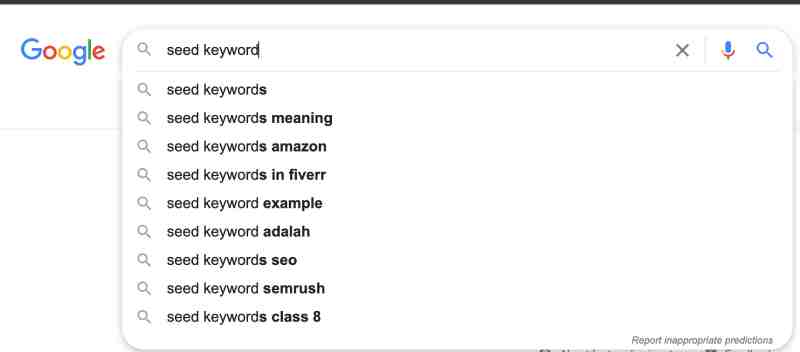
Other ways of extensive keyword research include using paid tools like Ahrefs that show you the keywords people generally search in much detail.
Understanding Backlinks
Backlinking is an extremely important tool to help a website’s SEO improve and have its articles rank better, however, there isn’t much a content writer can help with when it comes to backlinking.
Still, while writing content, you will be expected to do only one thing: hyperlinking sources.
Whenever you use a statistic or fact in your article, it is best to hyperlink the text to the source for your information. This helps the reader trust your information more.
This will not actively help your blog’s SEO but will definitely help you produce good articles and satisfy clients.
Plagiarism – How Much Is Allowed?
Since writing blogs will leave you relying on readings other blogs on the internet to get a better grasp of the topic, you will need to play it extremely safe avoiding plagiarism at all costs.
For example, if you’re writing a blog about “how to use a fishing rope” and you don’t have prior experience using fishing ropes, you will have to read other blogs on the internet that explain the topic to you.
But when you write your own blog, you need to make sure your blog is different from the other blogs already posted on the internet.
Even if the methods are universal and you have to write along the lines of what an existing blog already tells, you need to do it in different words, using different headings, and different explanation methods (maybe use a graph. table, or examples).
Under no circumstances should you copy and paste content from a different blog to yours. This includes using paraphrasing tools like Quillbot to paraphrase content to avoid plagiarism.
Google works extremely smart to detect plagiarism, and if found in your content, Google will penalize your website.
What Are Heading Tags?
When writing content, you will be expected to use heading tags.
Using heading tags correctly helps Google understand your topic better, improves the SEO of your blog, and helps readers with a better reading experience of the blog.
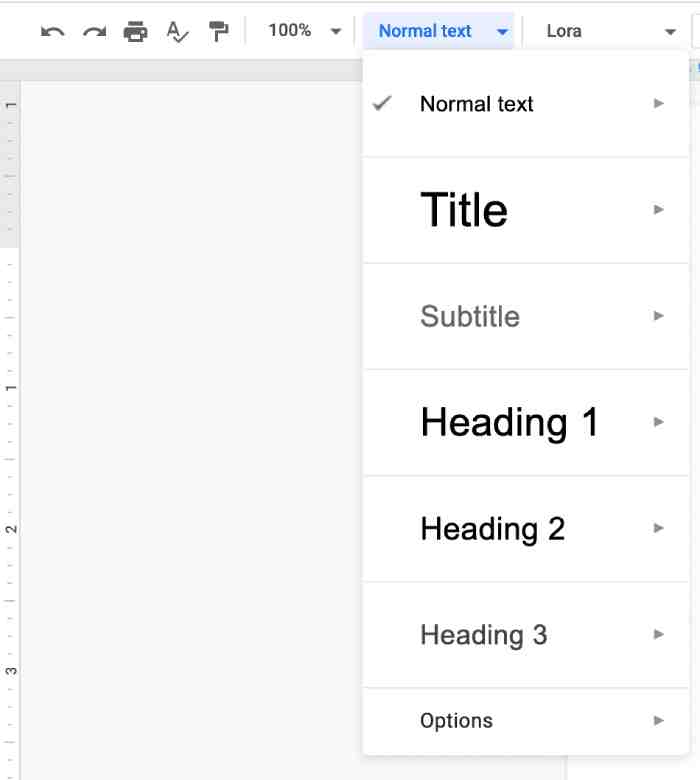
The order of heading tags that content writers use are H1>H2>H3>H4…
H1 (Heading 1) is the title of your article– consider it the main heading. This is only used once in a blog since it’s a title.
H2 are the main headings that make part of the blog and explain the topic.
H3 are the subheadings of the main headings (H2) if they need further explanation.
And H4 are the subheadings of the subheadings (H3) if they need even further explanations.
Example of Headings Tags
In this blog, How To Start Content Writing… is the H1 (title).
The Steps are H2 (the main headings).
H3 are the subheadings of each step (For example ‘What Are Headings Tags’ is the subheading of Step 3).
And H4 are the subheadings of some subheadings that needed further explanation (For example ‘Example Of Using Heading Tags’ is the subheading of What Are Headings Tags, which was already a subheading of Step 3).
Jump up to the table of contents of this blog to visualize this.
To assign heading tags in Google Docs, all you need to do is select a heading and choose the tag from the toolbar, or press Ctrl + Alt + 1 for h1, Ctrl + Alt + 2 for h2, and so on.
Understanding Writing Tones
Using the appropriate writing tone helps your readers understand your blog better.
Writing tones aren’t a very strict rule of content writing, but it is better to practice writing in different tones.
This will help your content writing profile be diverse and help you attract clients that may be looking for less popular writing tones.
For example, writing blogs for a real estate website will need you to be extremely formal and sound confident. On the other hand, writing How-To guides for a pet store website will need you to lean more towards an informal, cute, and friendly tone.
You can practice writing different tones by reading blogs of different natures and understanding what vocabulary and sentence structures are appropriate for different tones.
What Are CTAs?
CTAs are an acronym to Call To Action.
When writing emails or web content, a content writer may be expected to include some CTAs in the content.
CTAs, essentially, only showcase an urgency in the reader’s mind and pushes them to take the said action.
For example, if you’re writing an email to ex-clients of a software business about a new feature, and the client wants you to add CTAs pushing the ex-clients to rejoin their business and be offered a discount, your email should include a phrase like:
Sign up now and avail 25% discount for a limited time only!
This would be a CTA and would create a sense of urgency in the reader’s mind, calling them to take the action i.e. sign up.
Similarly, CTAs are also used in Web Content to push visitors to engage with the business once on their website.
Do You Need To Learn WordPress Skills?
No. A content writer does not need to learn WordPress skills.
However, some long-term contracts with clients may require you to have basic WordPress skills.
Since blogs need to be posted on websites using WordPress, long-term clients may delegate the responsibility of creating AND posting blogs to you.
But, don’t worry. This would only need you to learn how to add posts through WordPress, which is a mere 3-step process.
Step 4: Writing Your First Article
Now that you understand the 101s of Content Writing, you need to write your first article.
Even if you haven’t found a client or employment, it’s best to start writing and practicing now to create a strong portfolio that helps you land jobs and clients.
What Makes A Good Content Writing Article?
Before you write an article, let’s look into what makes writing good writing.
This will help you know what to focus on and create great content yourself!
- Satisfying Intent: Your article should answer the question or topic at hand. It shouldn’t float around the topic but instead must satisfy its purpose.
- Relevance: All the content and headings should be related to the topic.
- Appropriate tone: The right tone and vocabulary should be used based on where and how the content will be used.
- To the point: Do not use fluff words. Convey your message in a limited amount of words. Do not repeat yourself or beat around the bush. Get straight to the point.
- Intrigue: Your intros and heading structure should intrigue the reader to go through the whole blog, email, webpage, etc.
- Personal touch: When writing blogs, try to give it a personal touch. This helps the reader feel a closer connection and helps them relate to the stuff you say better. This can be done by using friendly vocabulary and I sentences.
- Earn the reader’s trust: Use examples, show proof, or mention statistics linked to their sources. This will help the reader feel that your information is credible and useful to them.
- Order of headings: Write headings chronologically. Create a heading structure that provides the information of a blog in the most useful and viewer-friendly order.
- Skimmable: Most readers skim blogs and do not really read every word. Limit headings to 300 words, bold the important points, and limit paragraphs to 3 lines max.
- Reader-friendly: Use bullet points, tables, or graphs to make your articles look visually pleasing.
Now let’s help you write your first article!
Choosing Your First Topic
The first thing you’ll need to do is choose a topic.
For your first article, I’d suggest that you choose a How-To guide about something that you yourself have experience with.
If you think you can easily write about the solutions to the problem for at least 1000 words, go for it!
Where And How To Research A Topic
Now that you have a topic in hand, you need to do its due research.
The best way to research? Google and Youtube.
By simply googling the topic, you will find tons of blogs about it.
These blogs may not be well reformed, but they should be enough to give you a general idea about how the problem is solved and you can write it in your How-To guide.
If you need in-depth knowledge of the topic, finding videos on Youtube may be better than blogs.
Youtube videos are animated and created professionally and can help you grasp a better understanding of the topic.
Read and watch until you have a firm grip on the topic.
Also, note how the bloggers and Youtubers have approached the topic. How many solutions do they give out, what other sub-topics do they cover, and what do people demand more in the comment section? Stuff like that.
Ultimately, your goal should be to make a better guide than any blog or video that exists on the internet.
At first, that may sound like a big challenge, but trust me, over time when you’ll see your posts ranking at the top of Google, you’ll realize making great blogs isn’t anything too hard if the research is done properly and the topic is explained proficiently.
What If There Are No Blogs Or Videos On The Topic?
Very rarely, you will find yourself in a position where the topic you need content for is not written or managed by anyone before.
Now, you will need to rely on Quora or Reddit.
These public forums share the personal experience of users and already have threads relating to almost every topic there is in the world.
And if you don’t even find a question over there, you can post one yourself and get answers from different people.
Finding Keywords For Your Blogs
Now that you have a good understanding of the topic, you need to know what phrases or keywords users Google to find information about it.
Most content writers are provided with keywords with the topic they need to write about, however, if that’s not the case, here are two easy methods to find organic keywords for your topic.
First off, type your topic in the Google search bar and take a view at Google’s autofill predictive searches. What does Google tell you people search about around those topics?
You can list out the autofill predictive searches Google tells you and use them as keywords.

Image Shows keyword research method using Google Autocomplete
The second option, Google your topic and scroll down the results. Soon enough, you will see a tab of Google related searches.
This also tells you about the questions that revolve around your topic that people often Google.
Now that you have a list of phrases that revolve around your topic, use those naturally in your blog as keywords.
Either make separate headings for some questions or use the phrases in the paragraphs.
If used right, it can really help your blog stand out on Google!
Creating A Heading Framework For Your Blog
Once you’re done glancing over other work, you need to create a framework for your own blog.
Open up a new document (Google Docs is the preferred application for writers) and at least 3 other blogs that you found on the internet relating to the topic.
Using Headings From Other Blogs
List out the common headings that you need to put in your document that the other blogs mentioned as well.
Now you’ll find some headings that are unique to each blog. If you have a good understanding to write about those headings in your own words, list them down too.
Now go back to your article and give those headings an order.
Make sure you don’t copy-paste the exact same heading! Use your own words.
Brainstorming Your Own Headings
Now think for yourself, open up Youtube comments relating to the topic, Google-related searches, and Quora and Reddit threads. What are people discussing that is not already in the existing blogs? What extra headings can you add to your blog to make it better?
If you find some questions people have unanswered, be sure to make some headings in your blogs too.
Your blog should have a significant amount of content that is original and unique and found nowhere else on the internet.
Finally, fit those headings in naturally to the order you previously created and you are good to go!
Formatting Your Headings
A typical How-To guide would follow a heading order like this:
Intro>Best Solution> Alternate Solutions> Causes of the said problem > Troubleshooting errors> FAQs> Conclusion.
These main headings would be formatted as H2. You can use further H3 headings for these headings that act as subheadings explaining the heading further.
How Lengthy Should Your Blog Be?
The length of a blog isn’t a significant factor that judges its quality.
Essentially, blogs should at least be 300-500 words long.
Pillar posts can go up to around 10,000 words as well.
When writing on a topic, compare the length with other existing blogs on the internet. If you want to beat those articles, try to make yours a little more lengthy.
But remember, using fluff to add more length would never work in your favor!
Always increase the length by offering more quality information in your blog.
The standard length you should start your practice around should be around 1000 – 1500 words.
What Tone Should You Use?
Approaching a topic with the right tone is extremely important.
Readers like to be approached in the right tone to help themselves feel trusted with the information your blog features.
There is no right or wrong answer to what tone works perfectly in what scenario, but as a general rule of thumb, for topics of a serious intent such as government organizations, social welfare, finance and business, etc. it’s better to sound professional and use a formal tone.
On the other hand, for casual how-to guides, tour guides, tech reviews, or DIYs, an informal friendly tone is best.
By reading other blogs on the topic, you should be able to identify what tone most people approach the topic with.
Start Writing!
With all that in mind, all that’s left to do is start writing!
You’ve got the topic, you’ve researched enough to understand the topic, you’ve categorized the topic into headings, you’ve listed out keywords to use in the content, and you have an understanding of what tone to use!
So let’s jump into the writing.
Introduction – The Most Important Piece Of An Article
The first step of writing is the most important piece of your blog, the introduction.
The intro of your writing is the first impression of your writing.
This is where a reader judges your tone, your content, and generalizes how good of a source you are to get information from.
If you write an amazing blog, but a bad intro, the reader would just click away to a different article.
Whether this is an email, web content, or a blog, your introduction needs to be catchy, intriguing, and should build trust in the reader’s mind.
A good introduction would grab the reader’s attention towards the blog and make them intrigued and curious to read the whole piece of writing.
Here are some quick tips for writing intros for different types of blogs:
| Type Of Post | Intro | Example |
| List Posts | Summarize the solution your list provides.Establish a trust that your list is better than other lists on the internet (preferably by using figures or statistics). | Curious about new work-from-home management strategies?Today, I list out 3 working and proved management strategies that helped hundreds of companies enjoy better profits and growth than ever.XYZ, a Forbes 500 business, claims to have enjoyed an increase in revenue of 300% by using the third one! |
| How-To Guides | A brief introduction to the problem so the reader knows they’re at the right place with the same problem.A quick solution to the problem without teasing the reader much.Include an intrigue as to why they need to read the whole blog and not just the quick solution.Prove that your solution works with figures and/or statistics. | Google Chrome not connecting to the internet?Try restarting your router, restarting your PC, or checking your firewall settings.However, these simple procedures may seem tedious to a layman which is why I shed light on each solution in the simplest manner!80% of the time, the fix is just one router restart away. |
| Informative Guides | Define the topic with a universal definition.Intrigue the reader as to why they need to learn more about it. | Content writing is the act of fulfilling the content needs of a business.However, the whole grasp of the term is much more than that!Let’s dig into the subject! |
Writing The Body Of An Article
The main body is the core of the blog. Here is a general view on how to create the main body for each type of blog:
| Type Of Blog | Main Body |
| List Posts | Give each item on the list its own heading, explaining every aspect of it, from pros to cons. |
| How-To Guides | Start with the heading of the most recommended solution and write it in a step-by-step manner (using H3 in some cases).Follow up with headings of other methods or solutions (step-by-step manner again). |
| Informative Guides | Start exploring the topic from the tip of the iceberg all the way down. The first few headings should define the topic and contain enough general knowledge to summarize the topic, while the following headings dig down into the topic more and more in an appropriate and reader-friendly order. |
Concluding Your Blogs Like A Pro
For each type of content, the last heading should be a concluding heading.
There is no strict check on how to create a great conclusion. All you should do here is summarize your blog and maybe backlink some other blogs on your website hoping for the reader to jump towards them next!
Proofreading and Checking For Plagiarism – The Cherry On Top Of Your Cake
Hopefully, the approach I took you with has helped you create a document now.
Congratulations! The hardest part is over!
You wrote your first blog!
Now all that’s left to do is give it some finishing touches to assure that everything is perfect.
The first thing to do is proofreading the document. Make sure there are no grammatical, punctuation, vocabulary, or structure errors!
Now that you’re a content writer, the most insignificant of honest mistakes can look bad on your profile.
And once the proofreading is done, check your content for plagiarism.
Use this tool for identifying plagiriasm. The margin for plagiarism is none, so make sure there is 100% uniqueness!
Whichever sentences get labeled for plagiarism, be sure to paraphrase and write them in your own words.
Step 5: How To Start Earning As A Content Writer
Now that you’ve written your first few articles, let’s get you into the money-making business!
You should expect to write at least a couple of hours a day to make money.
This will include practice and practice and practice.
Of course, do remember that content writing may be a highly rewarding job, the first few steps do not make you earn a fortune right away.
I will say, however, that working as a content writer is a very practicable, scalable, and quick way of earning the big bucks!
Creating A Writing Portfolio
Once you’re done with a few pieces of writing, whether it be emails or blogs (I would recommend you to start with blogs) you need to create a portfolio that showcases your work.
In all honesty, portfolios aren’t really as important to a content writer as they are to a designer, so a simple portfolio and account on LinkedIn would do.
Once you’re done attaching some of your work to your portfolio, it’s time to find work.
As a content writer, you can either a.
Becoming A Freelance Writer
Many content writers work as a freelancer.
This means that they use a remote platform to find work from businesses (clients).
Generally, this either involves creating a profile on Fiverr that attracts clients to approach you or approaching businesses yourself with your profile on Upwork.
In either case, you are not entitled to a business. You work on your own hours and time.
A business merely gives you a project and deadline to work on. Once done, you get paid for it.
That’s it!
However, for content writers starting out, I will not recommend this option.
Freelancing is a very practical and stress-free occupation, but in the time of learning as a content writer, my personal recommendation would be a job.
Still, many content writers do start out with and stick to freelancing, so let’s take a deeper look at how to start earning as a freelancer!
Earning Money Through Fiverr
The most popular platform for freelancers- Fiverr.
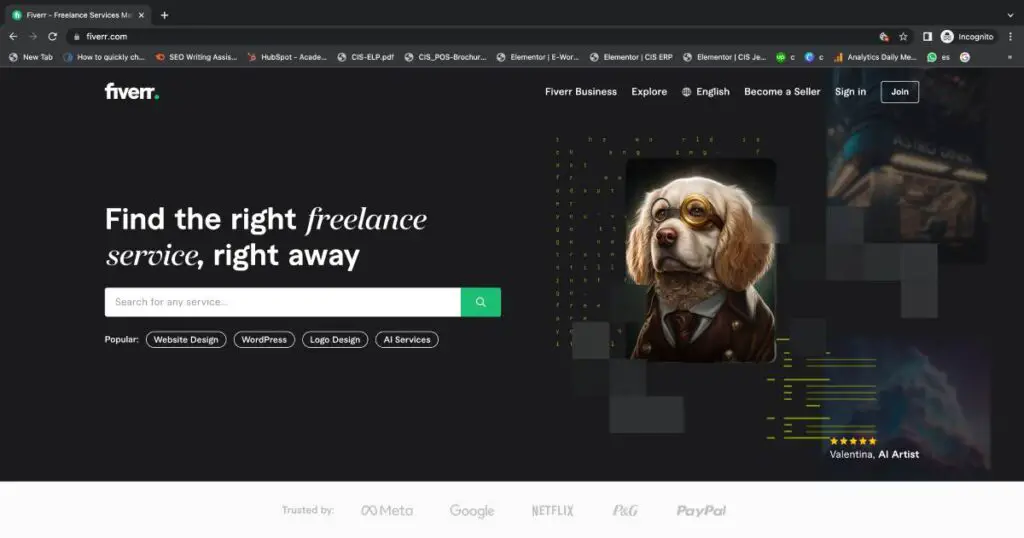
To earn money through Fiverr, all you need to do is set up gigs and find work through them.
A gig is basically an ad made by you, where you showcase the types of content you write and how much you charge for it.
Businesses that want work will then open up Fiverr, browse gigs, and select freelancers that they like.
This is how you get clients on Fiverr and can make money as a freelancer.
Earning Money Through Upwork
Upwork is also a great freelance hub for content writers.
On Upwork, you create a profile that includes your work. Then using that profile, you bid on work offered on the website.
Businesses use Upwork to make up posts and offer work to freelancers. Freelancers will then big on that work and get selected.
Once selected, the freelancer will get work from the business.
This is how you can earn as a Content Writer on Upwork.
Finding Jobs As A Content Writer
Contrary to becoming a freelancer, the other way of earning as a content writer is by getting a job.
This is my recommended method to you as well if you’re just starting out as a content writer.
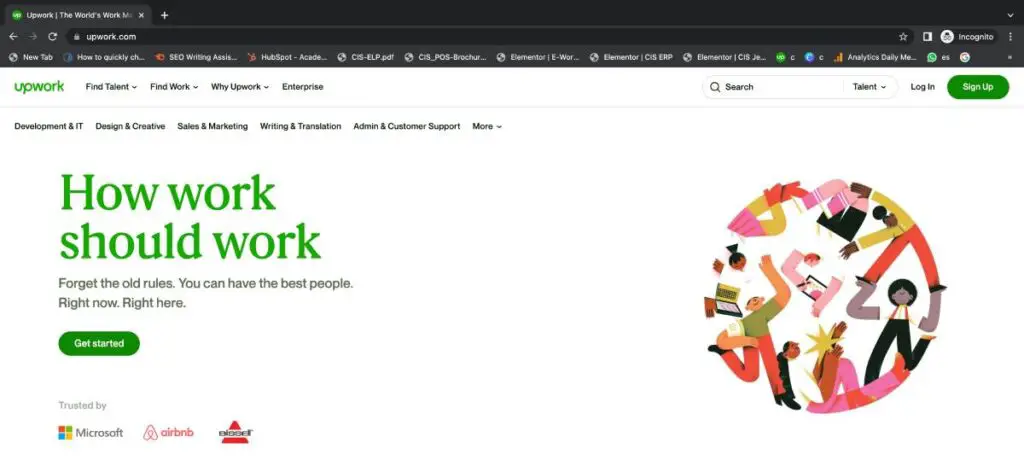
Finding a job would include you being hired by a business, working either remotely or in-house.
The best way to find a job as a Content Writer is Indeed.
Personally, I have secured two great employment opportunities through this medium.
Simply create a good resume and attach your work. Then apply to jobs that you think work for you. In a week or so, you should be contacted by a couple of businesses for interviews.
Starting out, you would probably be hired as an internee content writer since you have no prior experience, but even that title should have you earn good enough.
Freelance Vs. Employment – Which Is Better?
Now that you know both the options to earn, which should you opt for?
Personally, I would recommend you to go for employment.
The two main reasons for this would be steady pay and growth.
Finding freelance work as a starting content writer can be extremely difficult. You have no guarantee that you would even get any work in the first months or so.
Plus, clients have specific needs. As a beginner, you may not be able to satisfy them and earn great reviews.
Moreover, writing the first few articles isn’t enough. There’s a lot you still need to learn.
From SEO to different styles of writing, working with a team as an employee can greatly help you become a strong content writer.
This will not only help you secure better jobs in the future but can also help you start freelancing simultaneously with a job and help yourself earn even better!
Here’s a categorized comparison for employment vs. freelancing:
| Employment | Freelancing | |
| Earnings | Fixed | Variable |
| Overall earnings | Fixed | Can be higher or lower |
| Hours | Fixed | Variable |
| Working Conditions | Professional | At home |
| Non-financial benefits | Insurance, 401k, etc. | None |
| Growth and learning | Yes | Little to none |
| Teamwork | Yes | No |
| Freedom with work and clients | No | Yes |
| Leisure | Limited vacation days | Plentiful |
In my recommendation, once you have at least 6 months of experience as an employee, you should start exploring freelance simultaneously with your job.
If you start getting clients regularly from freelancing and want to shift towards it primarily, go for it!
Do remember, however, at the end of the day there is NO job security in freelancing.
You can have weeks getting paid handsomely, but there may also be weeks with dry or no pay.
Step 6: How To Practice Content Writing And Get Better
Now that you’ve become a content writer and have started making money, it is time for you to practice your writing and aim to be a pioneer in your industry.
Being a skilled content writer not only helps you land better jobs in the industry but also helps you build a stronger profile for your freelance work.
This means you can start charging your clients higher than before, and considering your amazing work, expecitng them to actually consider it above other freelancers who charge less!
Writing A LOT!
First off, the obvious step. To get good at something, do it more and more and more.
In the starting months of your working as a content writer, have NO PREFERENCES for what you want to write.
Accept literally any type of content writing work you get. Whether it’s passed on by one of your peers, an extremely difficult client, or a side hustle your boss assigns you to.
Secondly, do not pay attention to your earnings for now. Keep working, no matter how much it pays.
For freelance work, charge the lowest possible amount that you can to penetrate the market and get clients.
For employment opportunities, give preference to working with a senior writer, even if that is an internee job with lower pay.
For the first couple of months, all you need to do is keep writing and writing and writing…
Getting Feedback
But practice alone doesn’t make you perfect!
What if you’re not really writing as well? What if you’re relying on demerited techniques such as keyword stuffing or are unconsciously using plagiarized content?
This is why it is as significant for you to get proper feedback every time you complete a writing task.
Feedback from a senior content writer matters the most. Frequently ask them and push them what they think about your writing, how you can do it better, and for them to teach you some good SEO skills.
Similarly, ask your clients how your article does when it goes live. If it gets ranked or if the client would like any changes?
You shouldn’t rely on a client’s feedback primarily. Most clients don’t know much about SEO and can advise you on the wrong thing.
The best indicator is how your articles are doing. If even one of your articles from the 15 you write actually ranks on a Google page, try to figure out what you did right and keep practicing on it.
Working In Writing Teams
As mentioned before, working with a senior content writer would SIGNIFICANTLY help you progress as a writer.
But even if you have starter writers at the same level as you, working together, that’s better than doing it alone.

I personally started content writing in an office with 6 fellow peers, some seniors and some fresh like me.
That makes me consider myself lucky because, in our leisure time, we always exchanged our own techniques and ideas for writing, helping each other to become better and more efficient writers.
Create A Workplace At Home
If you’re not employed at an in-house office and work remotely, it is important you set up a workplace at your home to stay professional.
This goes for freelancers as well.
A professional setting helps you psychologically, boosting your morale and self-esteem working as a content writer.
You will feel more motivated to write on a workbench you create at your home that equips everything you need to write.

It would seem very easy for you to write in your own bed, but I would strictly advise you not to!
Working in your bed or on a couch would seem easy to start writing, but you will find a million things to be distracted with which would greatly affect your productivity.
Does sound ironic, as I type this in my bed, but my working chair is actually broken and that just kills the vibe of my workbench. But it’s fine to be a little picky, right?
Time Management
The human mind loves comfort, which is not really a good thing when placed against working productively.
This is why, even if you’re working remotely or freelancing, you should set some hours fixed for your writing and create a routine out of it.
Working consecutively for even 4 hours would definitely do you more benefit than working for 10 hours with breaks in between.

Time management is extremely difficult when there are no boundaries and bosses at home, but choosing comfort would just send you down an unproductive spiral.
Try choosing your working hours to be around the start of the day. That is when you will have the most energy and will feel motivated.
What Should Be Your Typing Speed?
If you want to earn big money as a content writer, you need to be FAST AS F-
Fast as a fidget spinner.
The more you type, the more you will earn, since your earnings would mostly be dependent on the words you submit at the end of the day or week.
This NEVER means quantity over quality, but it also doesn’t mean you should be a slowpoke who writes great articles.
To be an efficient content writer, your typing speed should be more than 50 words per minute.
If it’s lower than that and you’ve just started out, don’t worry, you’ll get there with time.
You can test your typing speed from here.
Watching Youtube, again
Youtube is an essential platform to learn skills from.
Even when in the beginner steps, I asked you to watch Youtube to better understand content writing.
And to practice it as well, I will recommend you to watch Youtube videos about content writing and stay updated on strategies and techniques for making great content!
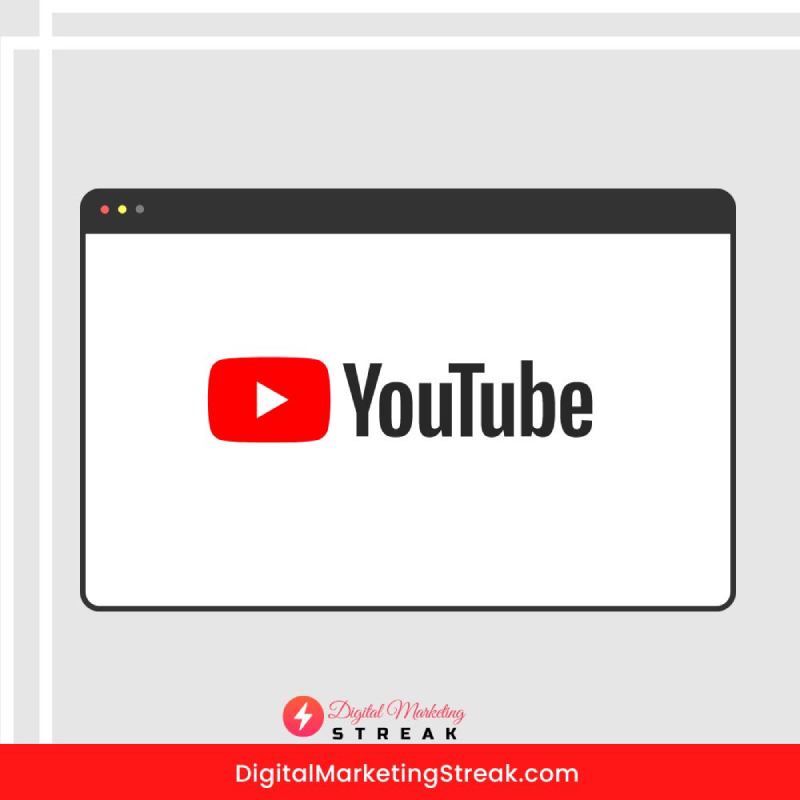
To this day, I still learn new stuff from Youtube videos that greatly help me with my writing skills.
Understanding Intent, again
When I explained SEO previously in this article, I mentioned how understanding the intent of the reader is the most essential tool to unlocking higher Google rankings on your blogs.
At the practicing stage of your content writing, this is what I would suggest you to further work on.
Improving SEO is one of the biggest reasons content writers are demanded by businesses, and if you understand the intent and can help businesses with their SEO marketing, you’ll be their biggest asset.
Understanding intent requires you to imagine yourself in the reader’s shoes, to identify their expectations from your blog when they google a keyword and the answers that they seek.
A great way to do this is by becoming a reader yourself.
Make a habit of Googling anything that crosses your mind that you’re curious about. Whether it be a DIY guide or information you seek on the famous sightseeing spots in Dubai.
Then look from your perspective, your behavior, and your expectations towards different blogs. See where the existing blogs catch your attention or intrigue you, and where they lose your interest.
And then implement those things later in your own writings.
Trying Different Writing Styles and Tones
As you grow as a content writer, you will face difficult clients and challenges.
Difficult and demanding clients tend to expect more from writers, however, this is mostly followed by a big paycheck as well, which is why you need to explore more in writing.
This includes trying different writing styles and tones.
If you were sticking to blogs previously, go for email writing, script writing, or web content.
This will broaden and diversify your skills as a writer and will help you bag more clients.
Generally, copywriting pays the best. If you feel ready for the challenge, go ahead and try copywriting!
Making Connections With Writers
As I suggested at the start, working alongside other writers will always be the most favorable option for you.
But even once you’ve settled into the content writing industry and have made a name for yourself, do remember that writing peers can still be of immense help to you.

Connections with different writers can keep you updated with the technicalities of the writing industry of today, you can exchange your preferred work with them, you can start a blog together, and many other things
Using My Writer Checklist
Lastly, use my blog writing checklist.
I have been in the content writing industry for the past 10 years. I have seen it grow massively, facing all the challenges myself and learning from them.
This includes changes in SEO over the years, dealing with thousands of clients and bosses, and starting my own blogs.
All of this experience has taught me many things, including how to write a great blog.
This is why I have created a FREE Blog Post Checklist, that lists out all the important aspects that your blog should feature.
As soon as I created this with a lot of research and used it myself, I did see an improvement in my blog post rankings!
So be sure to give it a try. It’s FREE!
Step 7: Starting Your Own Blog?
You have done everything a content writer can do now.
From writing your first blog to creating a profile, finding jobs and clients, and practicing the art yourself.
You should now be making a good career for yourself in the content writing industry, either as an employed content writer or a pioneer freelancer.
But is this really it? Is the peak of your career really still working under a boss or for your clients?
No. Not at all.
From my years of experience as a content writer, I have found it best for content writers to shift towards starting their own blogs once they find themselves to be good enough writers.
As a rule of thumb, content writing for at least 2-3 years should make you experienced enough to try running a blog.
With a blog, you will be creating your own website (business), where you write yourself (or with the help of writing interns or employees), grow your website, and generate revenue from the website that is consumed all by yourself!
Blogging is an extremely practical and reliable source of money, which is why you see even me shifting towards creating my own blog after years of writing for different businesses or clients.
And you don’t even have to completely quit your job or work to start it!
You can start your own blog by merely allocating 2 hours of your day towards it.
And as you see it grow, you can choose to invest more time if it generates more revenue in return!
Still reluctant? Don’t worry. It can seem scary from a third perspective. Then how about I share my own story with you and tell you the RIGHT way of starting a blog that is GUARANTEED to make you at least $600/month passively, as a starter?
Check out my guide on How To Start A Blog That Makes Money and the Costs To Start A Blog.
These guides should significantly help you take the next step in the best and most profitable way!
Interested in something else? I also have a working guide on starting your own email marketing business and starting your own digital agency, if that’s more your cup of tea.
Conclusion
And that is all there is to make a career out of content writing!
Depending on your work ethic and motivations, this simple guide can sow the seeds for you to become a millionaire!
And if you fall into any trouble, I hope the content writing guides on my blog can be of help.
With that being said, good luck towards an amazing Content Writing career!
If you have any queries or concerns, be sure to drop a comment below.
On the other hand, if you want to discover other profitable careers you can start at home, check out these 15 Online Hustles that can make you money from home!
Good luck!

